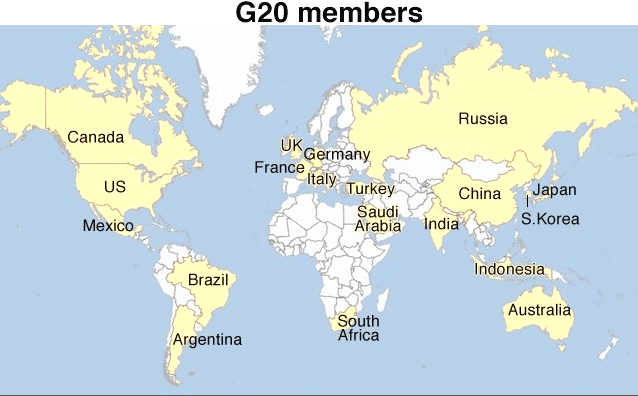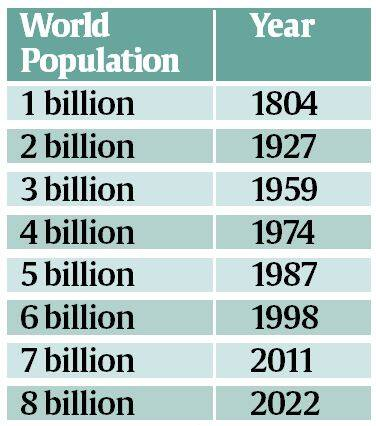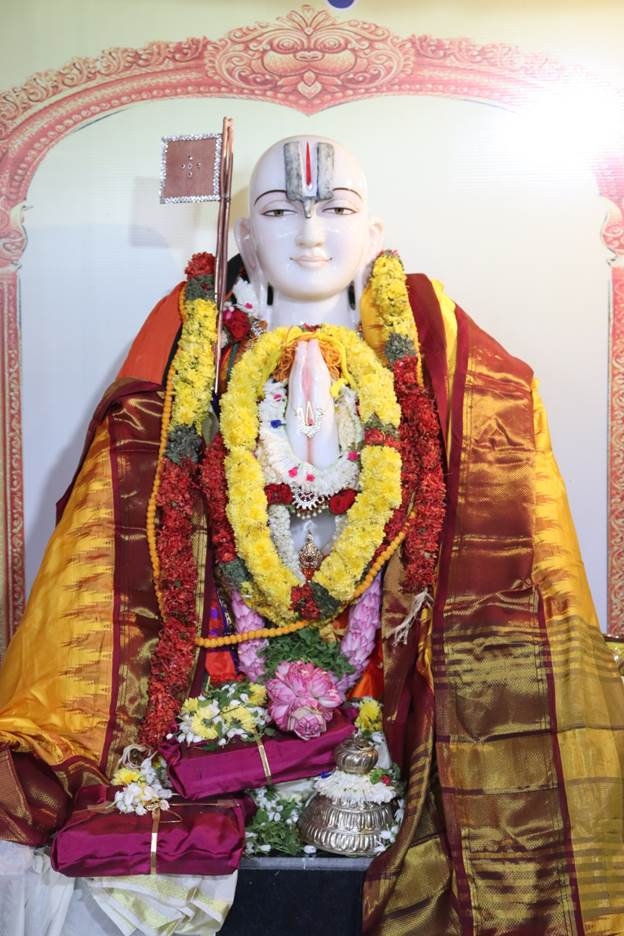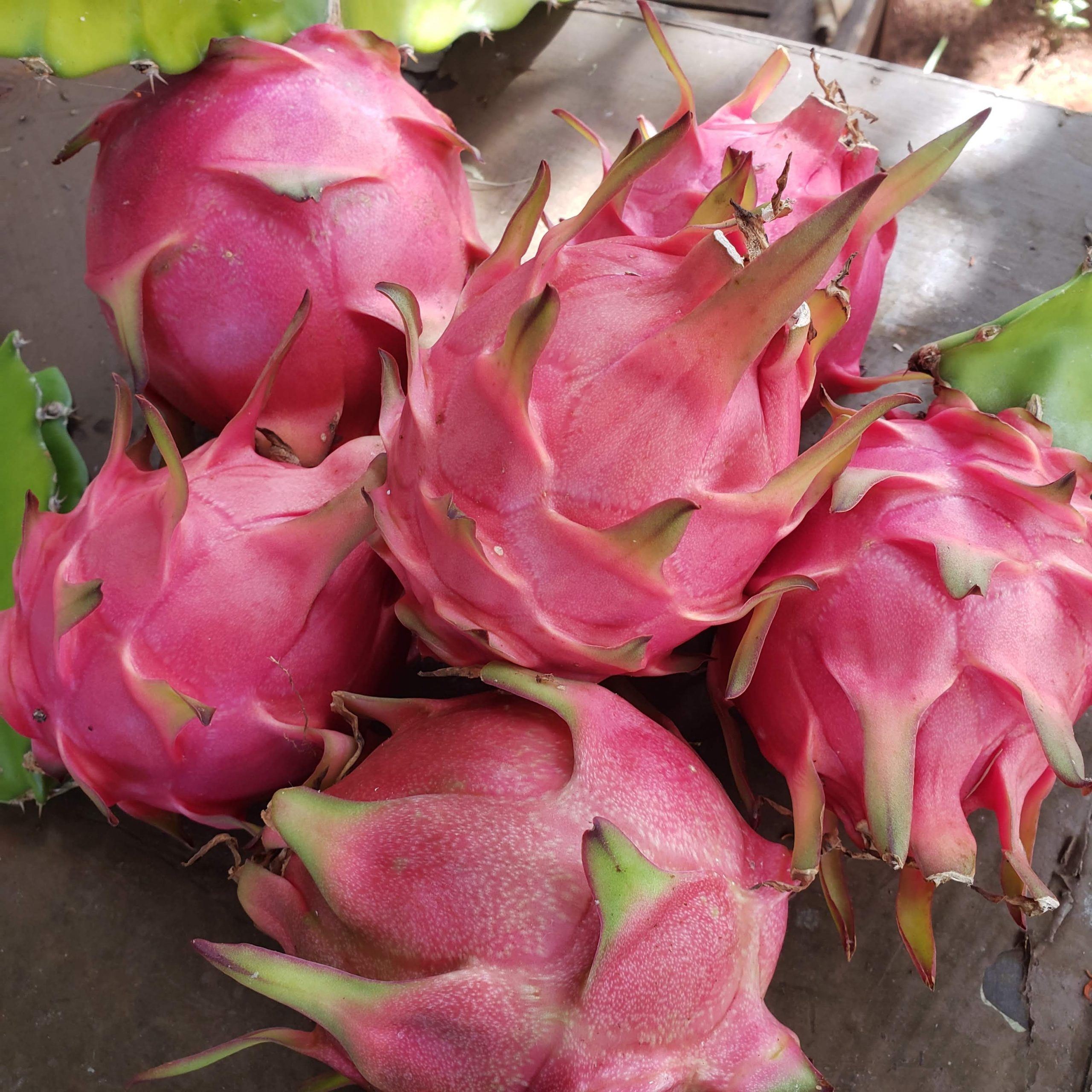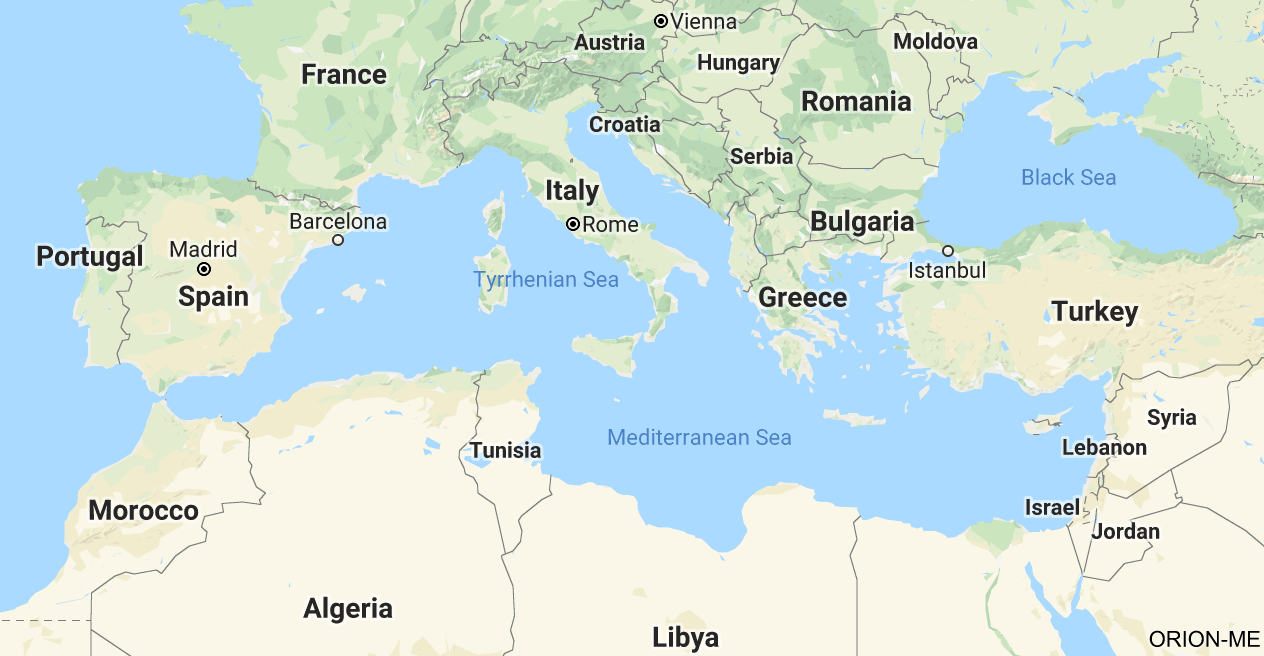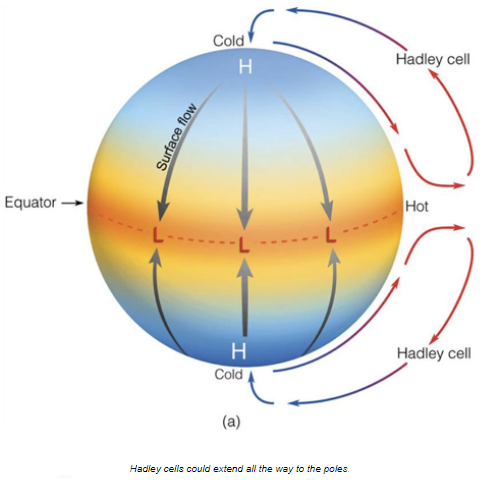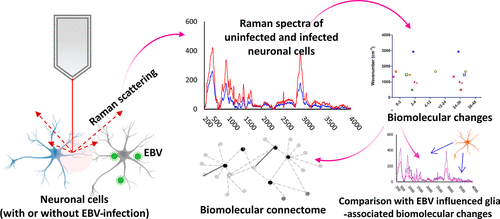G-20 Foreign Ministers Meeting
For Prelims: G20, International Organisation, India and International Groupings
For Mains: India’s foreign policy, Significance of G20 in India’s Foreign Policy, Challenges of global happenings on international groupings
Why in News?
Recently, the External Affairs Minister of India met with the US Secretary of State and Russian Foreign Minister and other counter parts in Bali (Indonesia) on the sidelines of the G20 Foreign Ministers Meeting.
- The meeting was held under the theme of “Building a more peaceful, stable, and prosperous world together.”
What do we know about the recent G20 Meeting?
- India & China:
- The External Affairs Minister of India met the State Councilor and Foreign Minister of China.
- India called for an early resolution of all the outstanding issues along the LAC in Eastern Ladakh.
- Recalling the disengagement achieved in some friction areas, India reiterated the need to sustain the momentum to complete disengagement from all the remaining areas to restore peace and tranquility in the border areas.
- Both sides affirmed that the military and diplomatic officials of the two sides should continue maintaining regular contact and looked forward to the next round of Senior Commanders’ meeting at an early date.
- China appreciated India’s support during its BRICS Chairmanship this year and assured China’s support for India’s upcoming G20 and SCO Presidency.
- India called for an early resolution of all the outstanding issues along the LAC in Eastern Ladakh.
- The External Affairs Minister of India met the State Councilor and Foreign Minister of China.
- Other Areas of Discussion:
- The meetings indicated the emerging differences within the G20 grouping as Russia accused the United States of forcing Europe and the rest of the world to abandon cheap energy sources while the US blamed Russia for “global food insecurity”.
- The G20 that includes 20 of the world’s biggest economic powers has a mandate to discuss global economic matters but the Foreign Ministers Meeting in Bali was dominated by criticism of Russia by the western members.
- The Ukraine war and its economic fallouts are hinting at a division within the ranks of the global grouping, with the US, EU, Japan, Canada, Australia, France forming one anti-Russia block while the rest of the countries prefer a cautious approach asking for peaceful resolution of the war in Ukraine.
What do we need to know about G20?
- About:
- It is an informal group of 19 countries and the European Union (EU), founded in 1999, with representatives of the International Monetary Fund and the World Bank.
- Its members are Argentina, Australia, Brazil, Canada, China, France, Germany, India, Indonesia, Italy, Japan, Republic of Korea, Mexico, Russia, Saudi Arabia, South Africa, Turkey, the United Kingdom, the United States and the EU.
- Nigeria was meant to be the “20th” member and was dropped at the last minute due to political troubles at the time.
- The membership comprises a mix of the world’s largest advanced and emerging economies, representing about two-thirds of the world’s population.
- It is an informal group of 19 countries and the European Union (EU), founded in 1999, with representatives of the International Monetary Fund and the World Bank.
- Functioning of G20:
- The G-20 has no fixed headquarters, and the secretariat moves by rotation between the countries hosting or assuming Presidency of the grouping each year.
- The members are divided into five groups (India is in Group 2, along with Russia, South Africa and Turkey).
- The G-20 agenda that still depends heavily on the guidance of Finance Ministers and central Governors is finalised by a unique system of ‘Sherpas’, who are special envoys of G-20 leaders.
- Another feature of the G-20 is ‘Troika’ meetings, comprising the countries presiding over the G-20 in the past year, present year, and next year. At present, the Troika is made up of Italy, Indonesia and India.
How has the G20 Evolved over the years?
- The Global Financial Crisis (2007-08) cemented G20’s reputation as the premier crisis management and coordination body.
- The US, which held the G20 Presidency in 2008, elevated the meeting of the Finance Ministers and Central Bank Governors to Heads of State, resulting in the first G20 Summit.
- The Summits in Washington DC, London, and Pittsburgh set the scene for some of the most durable global reforms:
- Blacklisting states in an effort to tackle tax evasion and avoidance, provisioning stricter controls on hedge funds and rating agencies, making the Financial Stability Board an effective supervisory and watchdog body for the global financial system, proposing stricter regulations for too-big-to fail banks, refraining members from imposing new barriers to trade etc.
- By the time Covid-19 struck, the G20 had wandered off from its original mission and G20 lost its focus.
- G20 reinvented itself by widening its agenda to include issues such as climate change, jobs and social security issues, inequality, agriculture, migration, corruption, terror financing, drug trafficking, food security and nutrition, disruptive technologies, and meeting the sustainable development goals.
- In recent times, G20 members have made all the right commitments after the pandemic, but there is little to show in action.
- At the Riyadh Summit in October 2020, they prioritised four things: fighting the pandemic, safeguarding the global economy, addressing international trade disruptions, and enhancing global cooperation.
- The Italian Presidency in 2021 had focused on three broad, interconnected pillars of action — People, Planet, Prosperity — vowing to take the lead in ensuring a swift international response to the pandemic.
What is India’s Potential for the G20 Presidency?
- As a founding member of the G20, India has used the platform to raise issues of vital importance and those that impact on the most vulnerable around the world.
- But due to the rising toll of unemployment rates and poverty in the domestic portion, it’s hard to take the lead effectively.
- Concurrently, India’s leadership role in delineating the success of India-France led International Solar Alliance is globally well acclaimed as a turning point intervention in mobilising resources towards promoting research and development in renewable energy.
- Also, the vision of ‘Self Reliant India (Atmanirbhar Bharat)’ initiative is expected to play a transformational role for “New India” in the global paradigm as an important and reliable pillar of world economy and global supply chains in the aftermath of Covid -19 crisis.
- India’s endeavour of establishing the Coalition for Disaster Resilient Infrastructure, comprising nine of the G20 nations amongst others provides new dimensions of leadership in the global growth process.
What are the Challenges G20 Facing?
- Global:
- Polarisation of Interests:
- Russian and Ukrainian Presidents are invited to the G20 Summit to be held in November, 2022.
- The U.S. has already demanded to not invite Russian President, or U.S. and European countries would boycott his address.
- China’s strategic rise, NATO’s expansion and Russia’s territorial aggression in Georgia and Crimea and now Russia Ukraine Conflict in 2022 changed global priorities.
- Globalisation is no longer a cool word, and multilateral organisations have a credibility crisis as countries around the world pick being ‘G-zero’ (a term coined by political commentator Ian Bremmer to denote ‘Every Nation for Itself’) over the G-7, G-20, BRICS, P-5 (UNSC Permanent Members) and others.
- Russian and Ukrainian Presidents are invited to the G20 Summit to be held in November, 2022.
- Other Challenges:
- International Finance:
- According to the recent IMF World Economic Outlook, the debt-to-GDP ratio in the median emerging market and the middle-income country was about 60% in 2021.
- Macroeconomic Policy:
- The war-induced supply shortages have amplified the inflationary pressure, especially in the energy and agriculture sectors.
- Proving Global Public Health Goods:
- The recovery from the pandemic has been largely uneven due to inadequate access to essential healthcare.
- Digital Economy:
- The Russia–Ukraine war has led to resurfacing of concerns regarding the illicit use of crypto-assets and its impact on the global financial stability.
- International Finance:
- Polarisation of Interests:
- Challenges for India:
- For India, the G-20’s challenges come with the hosting of Summit next November efficiently with member countries of polarised international interests.
- Former NITI Ayog CEO Amitabh Kant has been appointed the PM’s G-20 Sherpa, and former Foreign Secretary Harsh Shringla will be the G-20 Coordinator.
- The government plans to hold 100 preparatory meetings in different parts of the country, which led to a controversy over whether the G-20 summit or Ministerial level meetings would be held in Jammu Kashmir, considering India’s conflict with neighbouring countries.
- The bigger challenges, however, will remain for India to assist Indonesia in protecting the idea of the G-20, and keeping it from fragmentation in the face of geopolitical fissures, where leaders are loath to hear each other speak, or even sit in the same room together.
- For India, the G-20’s challenges come with the hosting of Summit next November efficiently with member countries of polarised international interests.
Way Forward
- The G20 must strengthen the partnership with international organisations such as the IMF, the OECD, the WHO, the World Bank and the WTO, and delegate them the task of monitoring progress.
- Global Cooperation should be given priority over individual interest for the benefit of all the member countries.
- Use of Dialogue and Diplomacy should be carried out to resolve issues like Ukraine - Russia conflict and differences between Russia and the west.
- India should focus upon utilizing the G20 2023 summit as a platform to raise discussions on issues such as aggressive trade barriers/ sanctions, inter country conflicts and advocate for global peace and cooperation.
UPSC Civil Services Examination, Previous Year Question (PYQ)
Q. In which one of the following groups are all the four countries members of G20?
(a) Argentina, Mexico, South Africa and Turkey
(b) Australia, Canada, Malaysia and New Zealand
(c) Brazil, Iran, Saudi Arabia and Vietnam
(d) Indonesia, Japan, Singapore and South Korea
Ans: (a)
Explanation:
- The G20 is an informal group of 19 countries and the European Union, with representatives of the International Monetary Fund and the World Bank.
- In order to achieve a robust global economic growth, the member countries which represent and contribute more than 80% of the global GDP came at the premier forum for international economic cooperation, which was agreed by leaders at the Pittsburgh Summit in Pennsylvania (USA) in September 2009.
- The G20 members include Argentina, Australia, Brazil, Canada, China, France, Germany, India, Indonesia, Italy, Japan, Mexico, Republic of Korea , Russia, Saudi Arabia, South Africa, Turkey, the United Kingdom, the United States and the European Union (EU).
- Therefore, option (a) is the correct answer.
World Population Prospects 2022
For Prelims: Demographic Dividend, Mortality Rate, Fertility Rate, SDGs
For Mains: World Population Prospects 2022
Why in News?
According to the 2022 edition of the United Nations’ World Population Prospects (WPP), India is projected to surpass China as the world’s most populous country in 2023.
What is the World Population Prospects?
- The Population Division of the UN has been publishing the WPP in a biennial cycle since 1951.
- Each revision of the WPP provides a historical time series of population indicators starting in 1950.
- It does so by taking into account newly released national data to revise estimates of past trends in fertility, mortality or international migration.
What are the Findings of the Report?
- Population Grows, but the Pace is Declining:
- The global population is expected to grow to around 8.5 billion in 2030, 9.7 billion in 2050 and 10.4 billion in 2100.
- In 2020, the global growth rate fell under 1% per year for the first time since 1950.
- Rates Vary across Countries and Regions:
- More than half of the projected increase in global population up to 2050 will be concentrated in just eight countries:
- The Democratic Republic of the Congo, Egypt, Ethiopia, India, Nigeria, Pakistan, the Philippines and the United Republic of Tanzania.
- The 46 Least Developed Countries (LDCs) are among the world’s fastest-growing.
- Many are projected to double in population between 2022 and 2050, putting additional pressure on resources and posing challenges to the achievement of the UN’s Sustainable Development Goals (SDGs).
- More than half of the projected increase in global population up to 2050 will be concentrated in just eight countries:
- The Population of Elderly is Increasing:
- The share of the global population aged 65 years or above is projected to rise from 10% in 2022 to 16% in 2050.
- Demographic Dividend:
- A sustained drop in fertility has led to an increased concentration of the population at working ages (between 25 and 64 years), creating an opportunity for accelerated economic growth per capita.
- This shift in the age distribution provides a time-bound opportunity for accelerated economic growth.
- International Migration:
- International migration is having an important impact on population trends for some countries.
- For high-income countries between 2000 and 2020, the contribution of international migration to population growth exceeded the balance of births over deaths.
- Over the next few decades, migration will be the sole driver of population growth in high-income countries.
What are the Findings Related to India?
- India’s growth rate stood at 2.3 % in 1972, which has dropped down to less than 1% now.
- In this period, the number of children each Indian woman has during her lifetime has come down from about 5.4 to less than 2.1 now.
- This means that Indian has attained the Replacement Fertility Rate, at which a population exactly replaces itself from one generation to the next.
- Fertility rates have been declining, so have mortality rates with increased access to healthcare and advances in medicine.
- Population of 0-14 years and 15-24 years will continue to decline while those of 25-64 and 65+ will continue to rise for the coming decades.
- This reduction of premature mortality for successive generations, reflected in increased levels of life expectancy at birth, has been a driver of population growth in India.
What are the Recommendations?
- Countries with ageing populations should take steps to adapt public programmes to the growing proportion of older persons, including by improving the sustainability of social security and pension systems and by establishing universal health care and long-term care systems.
- To maximize the potential benefits of a favourable age distribution, countries need to invest in the further development of their human capital by ensuring access to health care and quality education at all ages and by promoting opportunities for productive employment and decent work.
- For those already in the 25-64 age bracket, there is a need for skilling, which is the only way to ensure they are more productive and have better incomes.
Schemes of Cash Awards, National Welfare and Pension to Sportspersons
For Prelims: Target Olympic Podium (TOP) scheme, Sports Fund for Pension to Meritorious Sportspersons, Scheme of Cash Awards to Medal Winners in International Sports Events and Their Coaches, Pandit Deendayal Upadhyay National Welfare Fund for Sportspersons (PDUNWFS)
For Mains: Role of public institution in promotion of sport culture, Human Development, India’s participation in international sports events
Why in News?
Recently, Union Minister for Ministry of Youth Affairs and Sports launched revised schemes of Cash Awards, National Welfare and Pension to sportspersons, Web Portal for Schemes of Department of Sports (dbtyas-sports.gov.in) and National Sports Development Fund website (nsdf.yas.gov.in).
What are Amendments in the Schemes?
- Direct Applicability for these Schemes:
- Now, any individual sports person can directly apply for all three schemes (Earlier proposals were received through Sports Federations/SAI, usually taking more than 1-2 years).
- Applicants now need to apply online for a cash award scheme within six months from the last date of closing of the particular event”.
- Now, any individual sports person can directly apply for all three schemes (Earlier proposals were received through Sports Federations/SAI, usually taking more than 1-2 years).
- Pension to Meritorious Sportspersons:
- Pension benefits have been extended to the athletes of Deaflympics also.
- Web portal for the Implementation:
- To implement the above features in these schemes, the Department of Sports (DoS) has developed web portal dbtyas-sports.gov.in to facilitate sportspersons in applying to seek benefits under the above schemes of Department of Sports”.
- This online portal will facilitate real time tracking of applications by the sportspersons and authentication through One Time Password (OTP) sent on their registered mobile number.
- Physical submission of applications to the Ministry would now be no longer required.
- Portal will also generate different types of required reports and data management of the sportspersons.
- National Sports Development Fund’ (NSDF):
- DoS has also developed a dedicated interactive website nsdf.yas.gov.in for ‘National Sports Development Fund’ (NSDF).
- This Fund is based on Corporate Social Responsibility contributions from Central & State Governments, Public Sector Undertakings (PSUs), private companies, and individuals etc. for promotion and development of sports in the country.
- Individual, institution and corporate organisations can now directly contribute for players, sports facilities, and sports events through the portal.
- The NSDF corpus is used for Target Olympic Podium (TOP) scheme, Infrastructure development by eminent sports persons and sports organisations etc.
- DoS has also developed a dedicated interactive website nsdf.yas.gov.in for ‘National Sports Development Fund’ (NSDF).
What do we Know about the Amended Schemes?
- Sports Fund for Pension to Meritorious Sportspersons:
- About:
- It aims to provide lifelong monthly pension to medal winners in Olympic Games, Commonwealth Games, World Championships in the disciplines included in Olympic Games and Asian Games, Paralympic Games after their retirement from active sports or they attain the age of 30years, whichever is later.
- The Scheme will be applicable to sportspersons, who are Indian citizens and have won gold, silver or bronze medals in Olympic Games, World Cup/World Championships in Olympics and Asian Games disciplines, Asian Games, Commonwealth Games and Paralympic Games.
- The pension shall be payable to a sportsperson on his or her attaining the age of 30 years and will continue during his/her lifetime.
- Assistance given:
- Medallist at the Olympic/Paralympic Games (Rs.20,000)
- Gold medallist at World Cup/World Championship (in Olympic/Asian Games disciplines) (Rs.16,000)
- Silver/Bronze medallist at World Cup/World Championship (in Olympics / Asian Games disciplines) and gold medallist in Asian Games/Commonwealth Games/Para Asian Games (Rs.14,000)
- Silver and Bronze medallist in Asian Games/Commonwealth Games/Para Asian Games (Rs.12,000)
- About:
- Scheme of Cash Awards to Medal Winners in International Sports Events and their Coaches:
- The cash awards were introduced in 1986 and amended in 2020.
- To incentivize the achievements of outstanding sportspersons, encourage and motivate them for higher achievements and to act as inspiring role models for attracting the younger generation to take up sports.
- The Awards will be given in the following disciplines:
- Sports disciplines in Olympic Games/ Asian Games/ Commonwealth Games
- Chess
- Billiards & Snooker
Note
" Outstanding Sportsperson " means a sportsperson who has achieved a position within first 3 in individual events and team events in a recognized National Championship (Senior category) conducted by National Sports Federations, recognized by the Ministry of Youth Affairs & Sports, or National Games conducted under auspices of Indian Olympic Association, Inter-University Tournaments conducted under the auspices of Association of Indian Universities, or one who has participated in an international sports event in senior category in the sports disciplines included in Olympic Games, Asian Games, Commonwealth Games.
- Pandit Deendayal Upadhyay National Welfare Fund for Sportspersons (PDUNWFS):
- PDUNWFS was set up in 1982 (revised in 2016) with a view to assisting outstanding Sportspersons of yesteryear, living in indigent circumstances who had brought glory to the Country in sports.
- Provision of pension has been done away with as there is already a Scheme of Pension for Meritorious Sportspersons.
- The Fund shall be utilised for the following objectives:
- To provide suitable assistance to outstanding sports persons
- now living in indigent sportspersons.
- injured during the period of their training for competitions and also during the competitions, depending on the nature of the injury.
- who bring glory to the country in the international field and who are disabled as an after effect of their strenuous training or to provide them assistance for medical treatment.
- To provide suitable assistance to outstanding sports persons
- PDUNWFS was set up in 1982 (revised in 2016) with a view to assisting outstanding Sportspersons of yesteryear, living in indigent circumstances who had brought glory to the Country in sports.
Statue of Peace of Swami Ramanujacharya
Why in News?
Recently, in Srinagar, Union Home Minister Shri Amit Shah unveiled Swami Ramanujacharya's Statue of Peace.
Who was Ramanujacharya?
- Ramanujacharya was Born in 1017 in Sriperumbudur in Tamil Nadu.
- Ramanujacharya is revered as a Vedic philosopher and social reformer.
- He travelled across India, advocating equality and social justice.
- He Brought the treasure of Vedic literature to the doorsteps of the common man.
- Advocated the philosophy of Visistadvaitha, qualified monism.
- Dispelled the Mayavada concept, the world is illusionary.
- Became the preceptor of the Bhakti movement and the source for all other Bhakti Schools of thought.
- He was an inspiration for mystic poets like Kabir, Meerabai, Annamacharya, Bhakta Ramdas, Thyagaraja, and many others.
- Initiated the concept that Nature and her resources like Water, Air, Soil, Trees, etc., are sacred and should be protected from pollution.
Why it's Called Statue of Peace?
- The installation of this peace statue will bring the blessings and message of Ramanujacharya to Kashmiris of all religions and will take Kashmir further on the path of peace and progress.
- It would further enhance the development of the people of Kashmir without any discrimination.
What is the Saint Ramanuj's Connection with kashmir?
- Ramanujacharya visited Kashmir in the 11th Century to get an important manuscript called Bodhayana Vritti, a treatise on the Brahma Sutras.
- The Bodhayana Vritti had the reputation of being the most authoritative explanation of the Brahma Sutras.
- His disciple Kuresha accompanied him and committed the entire text to memory as local scholars did not permit Ramanujacharya to carry the manuscript out of Kashmir.
- After returning to Srirangam, Ramanujacharya dictated the Sri Bhashyam, the commentary on Brahma Sutra and the Acharya’s most notable work, to Kuresha, who wrote it down.
- Ramanujacharya again returned to Kashmir after 2 years to dedicate Sri Bhasyam to the region.
Dragon Fruit
Why in News?
Recently, the Centre has decided to promote the growth of dragon fruit, which is recognized as a "super fruit" for its health advantages.
- Further, the Centre believes that due to the fruit's nutritional benefits and global demand, farming in India may be extended.
What is Dragon fruit?
- About:
- Dragon fruit grows on the Hylocereus cactus, also known as the Honolulu queen.
- The plant is native to southern Mexico and Central America. Today, it is grown all over the world.
- At the moment, Mizoram tops among the States that cultivate this fruit.
- It goes by many names, including pitaya, pitahaya, and strawberry pear.
- The two most common types have bright red skin with green scales that resemble a dragon.
- The most widely available variety has white pulp with black seeds, though a less common type with red pulp and black seeds exists as well.
- The fruit is considered good for diabetic patients, low in calories and high in nutrients like iron, calcium, potassium and zinc.
- Largest Producer:
- The world’s largest producer and exporter of dragon fruit is Vietnam, where the plant was brought by the French in the 19th century.
- The Vietnamese call it thanh long, which translates to “dragon’s eyes", believed to be the origin of its common English name.
- Apart from Vietnam, this exotic fruit is also grown in the USA, Malaysia, Thailand, Taiwan, China, Australia, Israel, and Sri Lanka.
- The world’s largest producer and exporter of dragon fruit is Vietnam, where the plant was brought by the French in the 19th century.
- Features:
- Its flowers are hermaphrodites (male and female organs in the same flower) in nature and open at night.
- The plant sustains yield for more than 20 years, is high in nutraceutical properties (having medicinal effects) and good for value-added processing industries.
- It is a rich source of vitamins and minerals.
- Climate Conditions:
- As per the Indian Council of Agriculture Research, the fruit plant doesn’t need much water and can be cultivated on dry land.
- The cost of cultivation is initially high. but the plant doesn’t need productive land, it gives maximum production from the non-productive, less fertile areas.
What are the Related Steps taken by the State Governments?
- The Gujarat Government recently renamed dragon fruit as kamlam (lotus) and announced an incentive for farmers who cultivate it.
- The Haryana Government also provides a grant for farmers who are ready to plant this exotic fruit variety.
- The Government of Maharashtra has taken the initiative to promote dragon fruit cultivation in different areas of the state by providing good quality planting material and subsidies for its cultivation through the Mission on Integrated Development of Horticulture (MIDH).
Red Panda
Why in News?
Recently, the Padmaja Naidu Himalayan Zoological Park has started an ambitious programme to release 20 Red Pandas in about five years to the forests.
- The Singalila National Park, the highest protected area in West Bengal, will soon get new denizens.
What are the Key Points related to Red Panda?
- About:
- There are only two different panda species in the world, the Giant Pandas and the Red Pandas.
- It is also the state animal of Sikkim.
- Red Pandas are shy, solitary and arboreal animals and considered an indicator species for ecological change.
- India is home to both the (sub) species:
- Himalayan red panda (Ailurus fulgens)
- Chinese red panda (Ailurus styani)
- Siang river in Arunachal Pradesh splits the two phylogenetic species.
- It is found in the forests of India, Nepal, Bhutan and the northern mountains of Myanmar and southern China.
- The number of Red Pandas has been declining in the wild, even in the Singalila and Neora Valley National Parks, the two protected areas where the endangered mammal is found in the wild in West Bengal.
- Protection Status:
- Red Pandas:
- IUCN Red List: Endangered
- CITES: Appendix I
- Wildlife Protection Act 1972: Schedule I
- Giant Pandas:
- IUCN Red List: Vulnerable
- CITES: Appendix I
- Red Pandas:
What do we know about the Red Panda Release Programme?
- Padmaja Naidu Himalayan Zoological Park has started an ambitious programme to release 20 of these furry mammals in about five years to the forests.
- The Padmaja Naidu park, Darjeeling is one of the high-altitude zoos in the country and has been quite successful in captive breeding of the furry mammals.
- The Pandas will be released in the Singalila National Park, the highest protected area in West Bengal.
- Singalila National Park is located at the Singalila Ridge in the Darjeeling district.
- It is the highest altitude park in the state of West Bengal.
- It was initially a wildlife sanctuary and made into a National Park in 1992.
- Other national parks of West Bengal are:
- Jalda Para National Park
- Neora Valley National Park
- Sundarbans National Park
- Gorumara National Park
- Buxa National Park and Tiger Reserve
What are India’s Conservation Efforts for Red Panda?
- Securing the red panda habitat:
- WWF-India works with local communities to reduce their dependence on fuelwood by introducing them to innovative techniques to meet their energy demands.
- In Sikkim, more than 200 individuals have been trained in manufacturing bio-briquettes.
- Garnering local support:
- Local communities are involved in alternate livelihood activities that draw benefits for them, while also supporting conservation initiatives.
- In Arunachal Pradesh, community-based tourism enables the locals to earn additional income from the tourists coming to see red pandas.
- Mitigating threats to red panda populations:
- Working with local communities to reduce forest dependence and involving them in conservation measures addresses the threat of habitat degradation and fragmentation.
- WWF-India has also collaborated with the Sikkim Anti-Rabies and Animal Health (SARAH) and launched a programme to sterilize feral dogs in order to control their growing population around critical wildlife areas.
Azores High
Why in News?
Recently, a study revealed that an extremely large ‘Azores High’ (a subtropical weather phenomenon) has resulted in abnormally dry conditions across the western Mediterranean, including the Iberian Peninsula, primarily occupied by Spain and Portugal.
What do we mean by Azores High?
- About:
- Azores High is a subtropical high pressure system that extends over the eastern subtropical North Atlantic and western Europe during winter.
- It is associated with anticyclonic winds in the subtropical North Atlantic.
- It is formed by dry air aloft descending the subtropics and coincides with the downward branch of the Hadley Circulation.
- Hadley Circulation:
What are the Effects of Azores High?
- An annual drying of 5-10 millimetres per year per decade has been recorded in the Iberian Peninsula throughout the second half of the 20th century.
- A further 10-20% drop in winter precipitation is expected by the end of the 21st century.
- These projected changes make agriculture of the Iberian region some of the most vulnerable in Europe. The study projected:
- Olive-growing regions in southern Spain will suffer a 30% decline in production by 2100
- Cultivation area in grape-growing regions across the Iberian Peninsula will shrink 25% - 99% by 2050 due to severe water deficits that will render land unsuitable for viticulture.
Why are Azores High Expanding?
- The Azores High expansion is driven by external climate forces and that the only external forcing that produces this signal in the industrial era is atmospheric greenhouse gas concentrations.
- Azores High expansion emerged after 1850 and strengthened in the twentieth century, consistent with anthropogenically driven warming.
- The researchers explored the changing atmospheric conditions since the onset of the industrial era that contributed to these regional hydroclimatic changes by assessing how the characteristics of the Azores High varied over the past 1,200 years.
UPSC Civil Services Examination Previous Year Question (PYQ)
Q. Consider the following pairs: (2019)
| Sea | Bordering Country | |
| 1. | Adriatic Sea | Albania |
| 2. | Black Sea | Croatia |
| 3. | Caspian Sea | Kazakhstan |
| 4. | Mediterranean Sea | Morocco |
| 5. | Red Sea | Syria |
Which of the pairs given above are correctly matched?
(a) 1, 2 and 4 only
(b) 1, 3 and 4 only
(c) 2 and 5 only
(d) 1, 2, 3, 4 and 5
Ans: (b)
Exp:
- The Adriatic Sea is a part of the Mediterranean Sea positioned between the eastern coastline of Italy, and countries of the Balkan Peninsula, from Slovenia, through Croatia, Bosnia and Herzegovina, Montenegro, and to Albania. Hence, pair 1 is correctly matched.
- The Black Sea is an inland sea located between far southeastern Europe and the far western edges of the continent of Asia and the country of Turkey. It is bordered by Turkey, Bulgaria, Romania, Ukraine, Russia and Georgia. Hence, pair 2 is not correctly matched.
- The Caspian Sea is an enclosed body of water between Asia and Europe. It is bordered by Iran, Turkmenistan, Kazakhstan, Azerbaijan and Russia. Hence, pair 3 is correctly matched.
- There are 21 countries which border the Mediterranean Sea. These are Spain, France, Monaco, Italy, Malta, Slovenia, Croatia, Bosnia and Herzegovina, Montenegro, Albania, Greece, Turkey, Cyprus, Syria, Lebanon, Israel, Egypt, Libya, Tunisia, Algeria and Morocco.
- Morocco’s Mediterranean coast represents the westernmost edge of the Northern African coast. The coastline features the Strait of Gibraltar that marks the link between the Mediterranean Sea and the Atlantic Ocean. Hence, pair 4 is correctly matched.
- There are six countries (Saudi Arabia, Yemen, Egypt, Sudan, Eritrea, and Djibouti) bordering the Red Sea. Hence, pair 5 is not correctly matched. Therefore, option (b) is the correct answer.
Q. Mediterranean Sea is a border of which of the following countries? (2017)
- Jordan
- Iraq
- Lebanon
- Syria
Select the correct answer using the code given below:
(a) 1, 2 and 3 only
(b) 2 and 3 only
(c) 3 and 4 only
(d) 1, 3 and 4 only
Ans: (c)
Exp:
- The following countries have a coastline on the Mediterranean Sea:
- Northern shore (from west to east): Spain, France, Monaco, Italy, Slovenia, Croatia, Bosnia and Herzegovina, Montenegro, Albania, Greece, Turkey.
- Eastern shore (from north to south): Turkey, Syria, Lebanon, Israel, Egypt. Hence, 3 and 4 are correct.
- Southern shore (from west to east): Morocco, Algeria, Tunisia, Libya, Egypt.
- Island nations: Malta, Cyprus. Therefore, option (c) is the correct answer.
Biomolecular Alterations Post EPV Infection
Why in News?
Scientists have found that cancer-causing virus Epstein Barr Virus (EBV) can infect the neuronal cells and drive various changes in biomolecules.
- A researchers utilized the Raman Microspectroscopy Technique, under FIST (Fund for Improvement of S&T Infrastructure) scheme to explore the possible impacts of a cancer-causing virus on brain cells.
- Biomolecules are an organic molecule that includes carbohydrates, protein, lipids, and nucleic acids.
What is Raman microspectroscopy?
- Raman is a light scattering technique, whereby a molecule scatters incident light from a high intensity laser light source.
- Most of the scattered light is at the same wavelength (or color) as the laser source and does not provide useful information – this is called Rayleigh Scatter. However, a small amount of light (typically 0.0000001%) is scattered at different wavelengths (or colors), which depend on the chemical structure of the analyte – this is called Raman Scatter.
- Raman microspectroscopy is a vibrational spectroscopy technique used for investigating molecular fingerprints of a wide range of liquid or solid samples.
- The technique can be efficiently utilized to understand virus-mediated cellular changes and could provide valuable insights into specific biomolecular alterations.
What is EBV?
- EBV is a virus in the herpesvirus family that can infect humans.
- EBV virus has been found to be widely present in the human population. It usually does not cause any harm, but the virus gets reactivated inside the body in some unusual conditions like immunological stress or immunocompetence.
- This may further lead to various complications like a type of blood cancer called Burkitt’s lymphoma, stomach cancer, multiple sclerosis, and so on.
What are the Findings?
- It can change biomolecules such as fatty acids, carbohydrates, and protein components, leading to diseases of the central nervous system as well as brain cancer.
- Earlier studies provided links of EBV involvement in various neurodegenerative diseases. However, how this virus can affect the cells of brain and manipulate them is still unexplored.
- There may be timely and gradual changes in various biomolecules in the neuronal cells under viral influence.
- Additionally, these changes were distinct when compared to the changes observed in other supportive brain cells (that is, astrocyte and microglia).
- The lipid, cholesterol, proline, and glucose molecules are increased in the cells under viral influence.
- These biomolecular entities can ultimately play pivotal roles in the viral seizure of cells.
What is FIST Scheme?
- The “Fund for Improvement of S&T Infrastructure (FIST)” of the Department of Science & Technology (DST) is intended to provide basic infrastructure and enabling facilities for promoting R&D activities in new and emerging areas and attracting fresh talents in universities & other educational institutions.
- It is considered as complimentary support for enabling Departments/ Centres/ Schools/ Colleges to pursue research activities more effectively and efficiently.
- The current emphasis on the immensely successful FIST programme is for orienting it towards the goal of Atmanirbhar Bharat by providing accessibility of the R&D infrastructure facilities not only for research activities in academic organizations but also for use by the start-ups/ manufacturing industries/ MSMEs.
- The duration of support for each FIST Project is for a period not exceeding 5 years.

